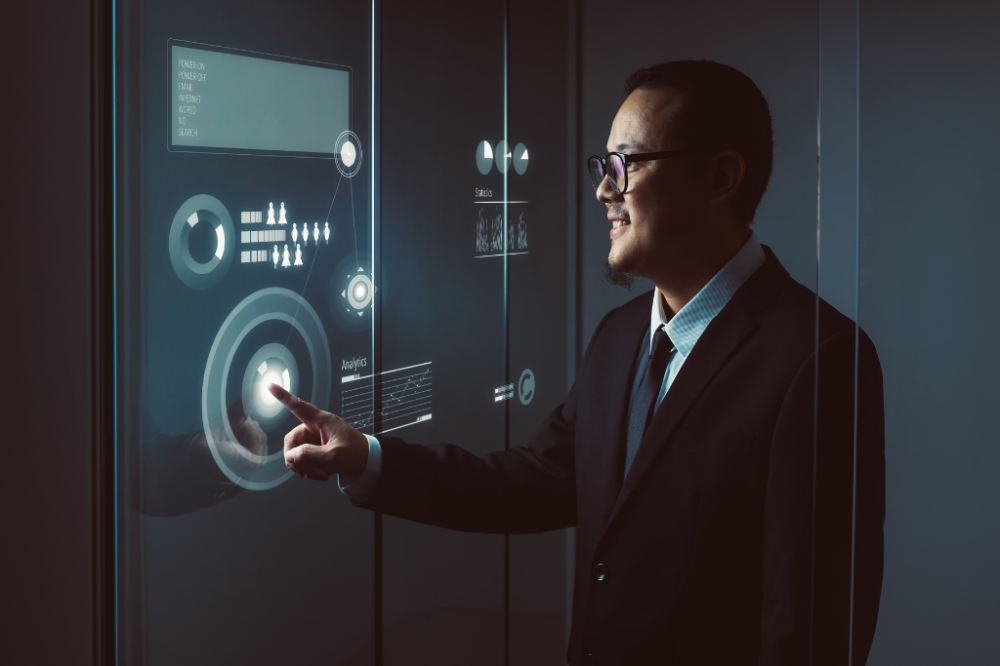The Role of User Experiences in Advancing Security Technologies | ||||||||||||
|
Introduction The evolution of security technologies is driven not only by innovation but also by the real-world experiences of users. As threats become more sophisticated and diverse, developers must prioritize user feedback to create systems that are effective, user-friendly, and adaptive to various needs. The interplay between user experiences and technological advancements has resulted in smarter, more intuitive security solutions. In this blog, we’ll explore how user experiences influence the design, functionality, and deployment of modern security technologies.
1. User-Centric Design: The Foundation of Security Technologies User-centric design has become a cornerstone in the development of security systems. Developers are increasingly focusing on intuitive interfaces, ensuring that users of all technical backgrounds can operate systems with ease. For instance, a home security system with a straightforward app interface and minimal setup time caters to a broad audience. Feedback from users often highlights the importance of reducing complexity while maintaining robust functionality. These insights push developers to simplify system controls and provide seamless integration with other smart devices. The result is technology that adapts to users rather than requiring users to adapt to it.
2. Balancing Security and Convenience Modern users demand a balance between security and convenience. Systems that are too restrictive can frustrate users, while overly simplistic ones may compromise security. Biometric access controls, for example, have gained popularity because they strike this balance, offering a quick yet secure way to access premises. User experiences help identify areas where convenience can be enhanced without sacrificing security. Feedback on issues such as false alarms, slow response times, or complicated setup processes encourages developers to refine their products, ensuring they meet both functional and user expectations.
3. Addressing Accessibility and Inclusivity The diversity of users necessitates security technologies that are accessible to everyone, including those with disabilities or limited technical expertise. Developers now consider factors such as voice-activated controls, adjustable text sizes, and compatibility with assistive devices. User experiences play a pivotal role in shaping these developments. Through surveys, beta testing, and direct feedback, developers identify barriers to accessibility and work to eliminate them. This approach ensures that security systems are inclusive, catering to a wider audience and fostering trust in the technology.
4. Emphasizing Real-Time Feedback and Alerts One of the most requested features in security systems is real-time feedback. Whether it’s a notification for an attempted breach or a live feed from surveillance cameras, users want instant access to information. This demand has spurred advancements in cloud-based systems and mobile app integrations. Real-world usage scenarios reveal the critical importance of accurate and timely alerts. For instance, users have highlighted the need for customizable notification settings to avoid information overload while staying informed about significant events. Such insights drive the continuous improvement of real-time monitoring technologies.
5. Integration of Environmental Monitoring Capabilities Security technologies are no longer limited to preventing intrusions—they now encompass environmental safety as well. Many modern systems integrate environmental monitoring tools to detect hazards like smoke, carbon monoxide, or water leaks. User experiences emphasize the importance of these features in providing holistic protection. Professionals offering Environmental Monitoring Services often collaborate with security system developers to create integrated solutions that protect against both human and environmental threats. By considering user feedback, developers can enhance the accuracy, reliability, and usability of these monitoring systems.
6. The Role of AI and Machine Learning in Shaping User Experiences Artificial intelligence (AI) and machine learning (ML) are transforming how security technologies interact with users. By analyzing user behavior, these systems can predict potential risks, personalize settings, and even learn to minimize false alarms. Users often highlight their preference for proactive rather than reactive security measures. This feedback has spurred the development of predictive analytics, allowing systems to anticipate and respond to threats before they escalate. These advancements not only enhance security but also align with user expectations for smarter, more adaptable technologies.
7. Continuous Feedback Loops for Future Development User experiences are not a one-time consideration—they form a continuous feedback loop that drives ongoing innovation. Regular updates, user surveys, and post-deployment support ensure that developers remain attuned to the evolving needs of their audience. This iterative approach allows security technologies to remain relevant and effective over time. From introducing new features to addressing emerging threats, user feedback serves as a vital guide for shaping the future of security systems.
Conclusion The development of security technologies is deeply intertwined with user experiences. By understanding the challenges, preferences, and expectations of users, developers can create systems that are not only functional but also user-friendly and reliable. From intuitive interfaces to advanced environmental monitoring capabilities, the feedback loop between users and developers ensures that security technologies evolve to meet real-world demands. As these systems continue to advance, the role of user experiences will remain central in shaping innovative and effective solutions. | |||||||||||
 |
